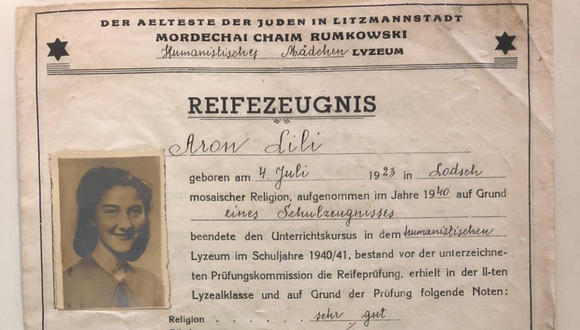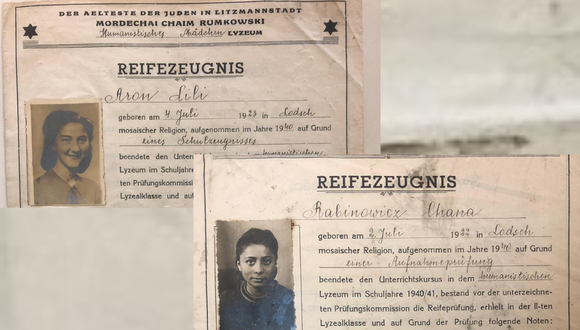International Holocaust Remembrance Day 2023
The Lodz Ghetto Schools
With the occupation of Poland starting in 1939, German authorities began a systematic concentration of the Jewish population within Ghettos. The first large-scale ghettoization efforts began in Lodz, Poland’s second-largest city. The Lodz Ghetto (Litzmannstadt) was created in April 1940 and lasted until August 1944, making it the longest-lasting entity of its kind in German-occupied Poland.[1]
During the German occupation of Poland, and the enforcement of ghettos, schools were closed, and the Jewish Polish residents' access to the majority of higher education was restricted. As a result, school and playtime came to an end for children. However, as Jewish communities traditionally held education in the highest regard, being banned into ghettos did not tamper with the education of the Jewish youth, especially in the Lodz ghetto.[2] Of the 60 Jewish elementary, and secondary schools active in Lodz when the Germans invaded, more than 40 continued to function after the ghetto was closed from the rest of the world. [3]
In Lodz, the Jewish ghetto administration, and the Ghetto chairman of its Judenrat, Mordechai Chaim Rumkowski, managed to receive German permission, under head Nazi administrator Hans Biebow, to run an official school system. Under Rumkowski’s supervision, the Jewish council established 43 elementary schools, 2 high schools, and one vocational training facility, serving some 63 percent of the ghetto’s school-age youngsters.[4]
According to Rumkowski’s own report from 15 May 1941, about 14,000 children attended primary schools in the Lodz ghetto and another 1,800 went to secondary schools.[5] Primary school became mandatory for all ghetto children, and the school system comprised further summer camps with about 1,400 attendees and schools for deaf children and those with learning disabilities.[6]
The school programs were intensified in Jewish subjects, such as Yiddish language, Jewish literature, history, religion, and geography of Palestine. Furthermore, efforts of normalcy through school, playing games, cultural performances, and reading became mechanisms to help the children forget for a few hours the harsh reality inside the Ghetto walls and the terror that prevailed outside.[7]

Lili Aron School certificate, Courtesy of the Wiener Library
Even though the classrooms were overcrowded and poorly equipped, the routines and companionship gave the children a sense of normalcy and relief from the overwhelming hardship of the ghetto. One meal a day was provided to the children at school as well, which meant the difference between life and death for many of them. [8]
The Wiener Library for the Study of the Nazi Era and the Holocaust holds in its archives two high school diplomas[9] of two Jewish girls who lived in the Lodz ghetto in 1941, Lili Aron, aged 17, and Chana Rabinowicz, aged 19.


As the Lodz Ghetto was liquidated in late 1944, and the remaining inhabitants of the ghetto were deported to the Auschwitz concentration camp, it is most likely that Lili and Chana did not survive the war. Like many other young Jewish girls who died at the hands of the Nazis, Lili and Chana did not gain the opportunity to experience a happy childhood. Despite the tragedies these children had to experience, these high school diplomas reflect the Jewish community's attempts to maintain as much normalcy as possible for them. It is conceivable that these educational institutions helped Lili, Chana, and thousands of other children alike, experience an ordinary childhood for a few hours each day.
To view the School certificates issued in Lodz Ghetto from the Wiener Archives, click here
[1] Heberer, Center for Advanced Holocaust Studies, & United States Holocaust Memorial Museum. (2011). Children during the Holocaust. AltaMira Press in association with the United States Holocaust Memorial Museum.
[2] Schmidt Holländer, H. (2014). Ghetto Schools: Jewish Education in Nazi-Occupied Poland (Doctoral dissertation, Staats-und Universitätsbibliothek Hamburg Carl von Ossietzky).
[3] Ibid.
[4] Heberer, Center for Advanced Holocaust Studies, & United States Holocaust Memorial Museum. (2011). Children during the Holocaust. AltaMira Press in association with the United States Holocaust Memorial Museum.
[5] Yad Vashem JM 3489.43_856
[6] Ibid.
[7] LEFFLER, P. (2008). [Review of “Give Me Your Children”: Voices from the Lodz Ghetto, by J. Nowakowski, T. Pollin, P. Black, & S. Hochberg]. The Public Historian, 30(1), 138–142.
[8] Schmidt Holländer, H. (2014). Ghetto Schools: Jewish Education in Nazi-Occupied Poland (Doctoral dissertation, Staats-und Universitätsbibliothek Hamburg Carl von Ossietzky).
[9] ‘Chaim Rumkowski Lyceum for girls’


